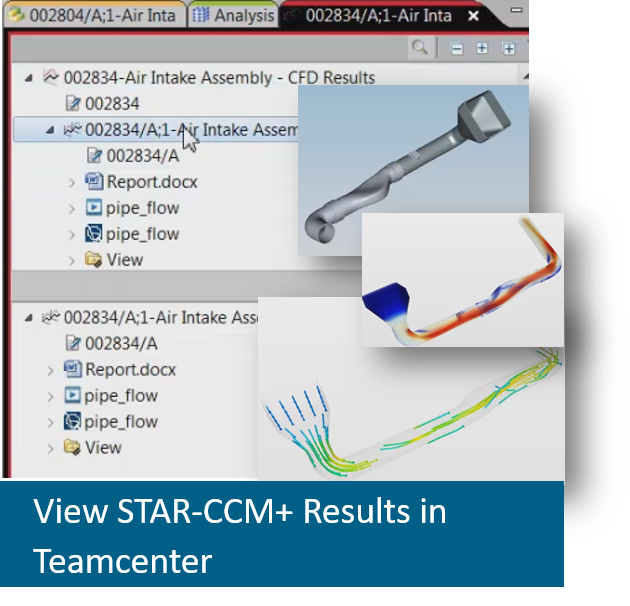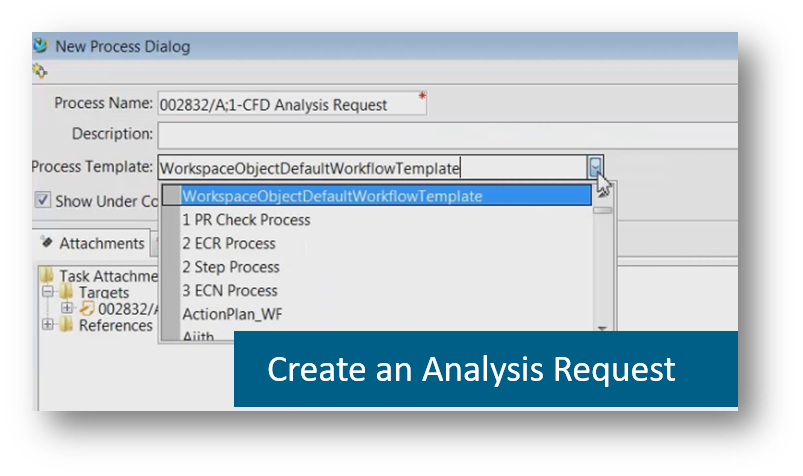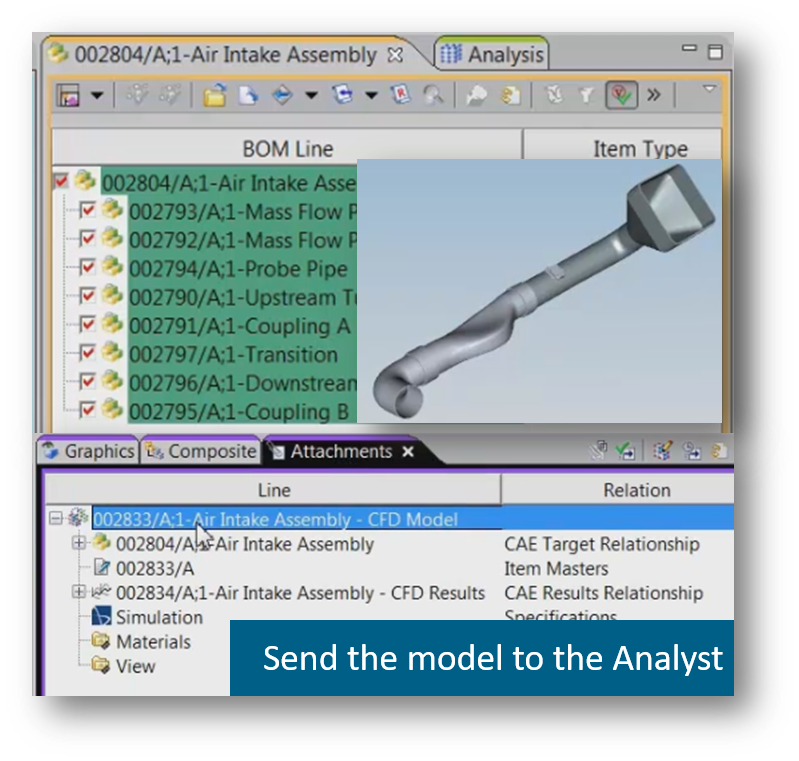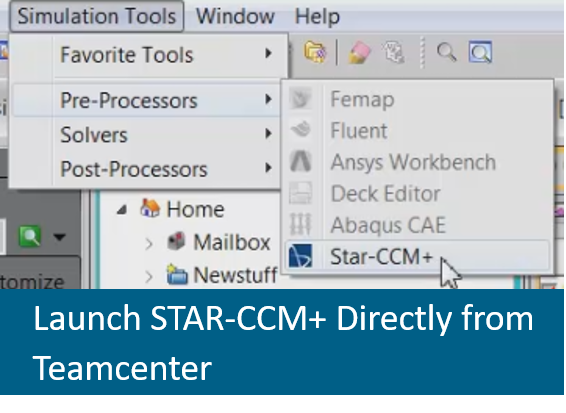Simcenter STAR-CCM+ v13.02: Better Teamcenter Connectivity with PLMXML schemas

One of the biggest challenges I faced while working in an Engineering Group was getting the right model. I don’t know how many times a review meeting ended in the first 5 minutes because the model had changed, or that I had somehow used the wrong assembly. A lot of that issue came down to the disconnect between the PLM system that ‘owns’ the model and the simulation engineer who was emailed a STEP file. This presents a big challenge (and not a new one): for the simulation tool to be connected to the PLM system and be able to recognize and react to the change.
Enter Simcenter STAR-CCM+ v13.02. With this newest release, slated for the end of February, we will allow the direct import of Teamcenter created PLMXML files into STAR-CCM+. This is the first of a series of capabilities that intend to remove the guesswork from ‘Do I have the right model?’.
Side Note: Over the past year we have had a series of meetings to discuss and design this capability with our Siemens colleagues and after a while an interesting new team challenge arose: Trying to go through and hour long meeting discussing PLMXML with no one in the room saying “PMLXML”. It became quite comedic once we started keeping a tally and running a leaderboard.
So it may be a mouthful, but what is a PLMXML anyway? PLMXML files behave in a similar manner to an assembly file, in other words, you have a master PLMXML which holds all the names, attributes and locations of the actual CAD data. The nice part about this is that the underlying CAD data can be in any number of formats (such as JT, Parasolid, NX, to name a few). So as a user, you can choose what you want to export and more than that, choose what type of data you want in Simcenter STAR-CCM+. This way you can bias the import towards BREP (parts with underlying CAD) data if it exists, and fall back to tessellated in the event some of the files don’t have it. You can do the inverse of that as well and ignore either type of data. The benefit here really goes towards the first option. In many scenarios, users need high fidelity representations in one area and a simple one in another, this option allows the flexibility to read the right data.
Ok, back to the issue at hand: Let’s get the right model into Simcenter STAR-CCM+ by pulling it directly from Teamcenter. This has always been an option: simply export the files t o a known
o a known to location, then import them into STAR-CCM+, setup the model, run it, save it. But there is a whole new dimension when you bring Teamcenter for Simulation into the mix.
to location, then import them into STAR-CCM+, setup the model, run it, save it. But there is a whole new dimension when you bring Teamcenter for Simulation into the mix.
Here is the workflow with SImcenter STAR-CCM+ v13.02. The designer of a component makes a Teamcenter Analysis Request (AR) that contains an up–to–date component and all its requirements. You (the simulation engineer) get alerted via email and open up the AR in Teamcenter. From there, you validate inputs and downselect the model to the appropriate components based on the request. Next, simply click on the Simcenter STAR-CCM+ icon in Teamcenter to create the PLMXML to load into an existing simulation or load it into one of the templated sim files without extra work. Once the analysis is run, Teamcenter automatically loads all of your sim files and collateral back into Teamcenter where results can be viewed and discussed with the Designe r right from the AR Everything is linked and synced !
r right from the AR Everything is linked and synced !
Here’s where things get fun
Now that the results have been reviewed, something will likely have to change (rarely is anyone happy with the first design!). Here is where the beauty of Teamcenter comes in. All you need to do is make the design revision and it is automatically recognized because it is flagged as out of date. So now you know the model doesn’t represent the latest and you have the choice to either load the new parts in the old sim file or start fresh. The backbone of STAR-CCM+ is the ability to re-run existing simulations with updated geometry, so using the old sim file is always my preference. At this point, you simply re-run the simulation and all your results get automatically pulled back into Teamcenter This capability combines the import and automation of STAR-CCM+ with the power and flexibility of Teamcenter. It opens the door to reducing your turn around time and reducing the frustration of getting and keeping up to date. It truly boils down the getting the Right Stuff all the time.


